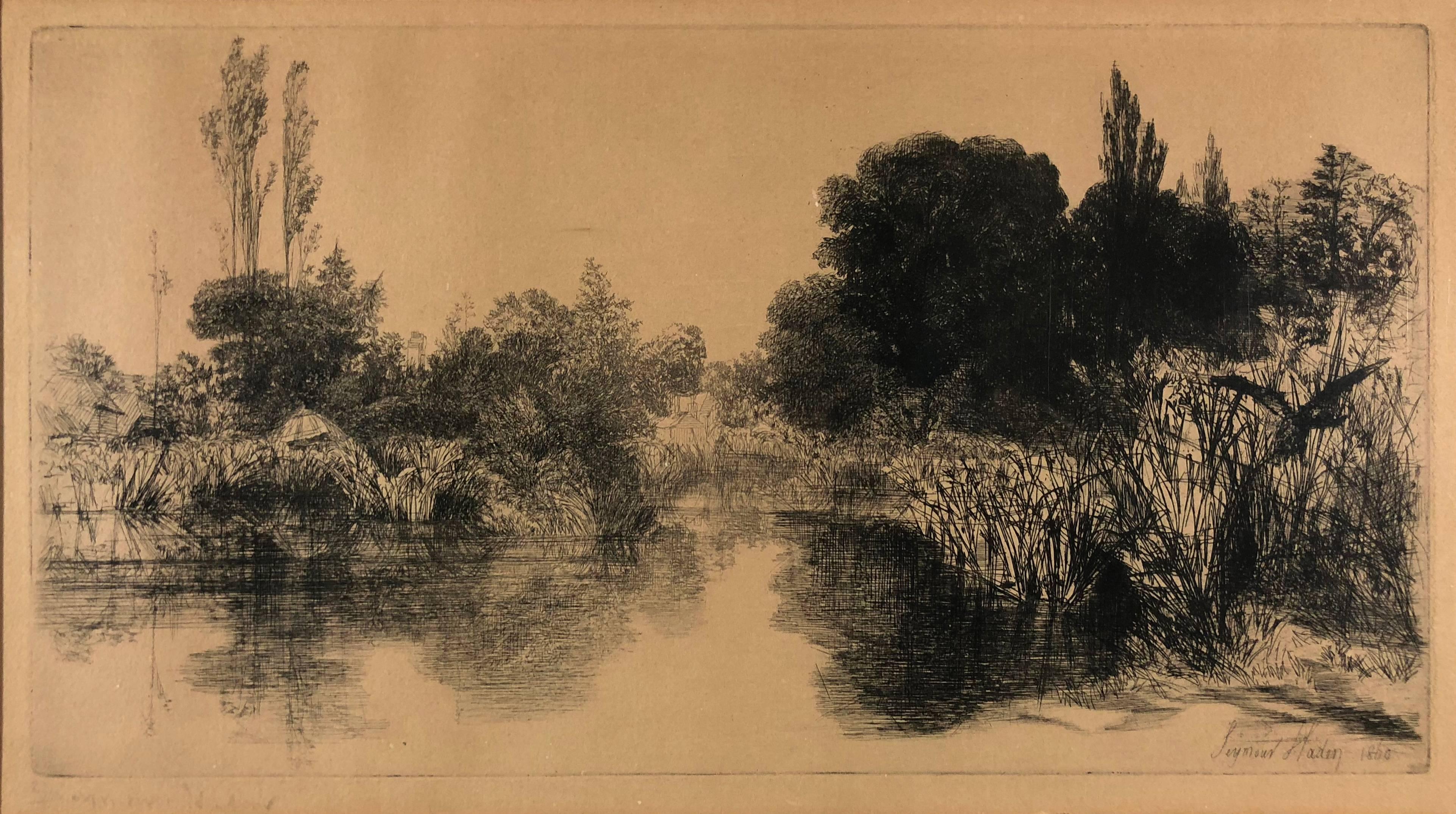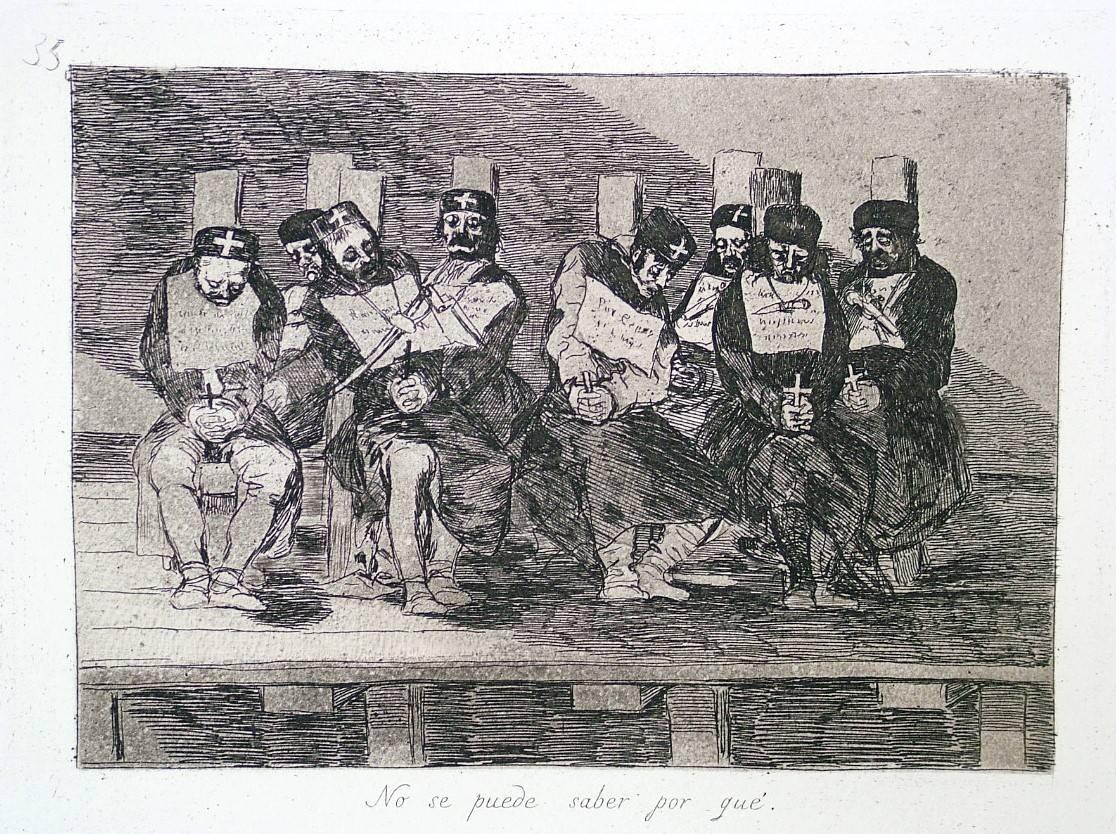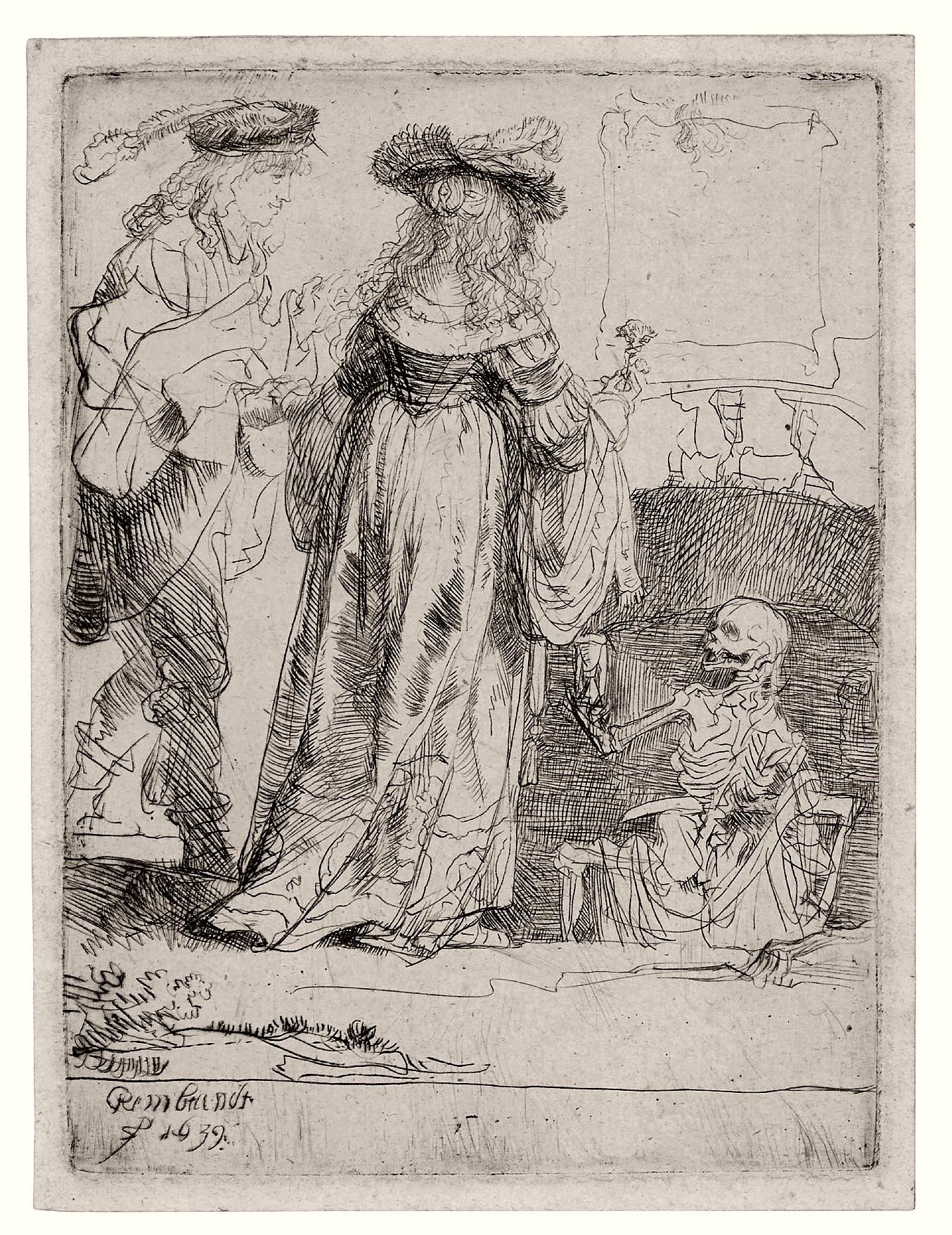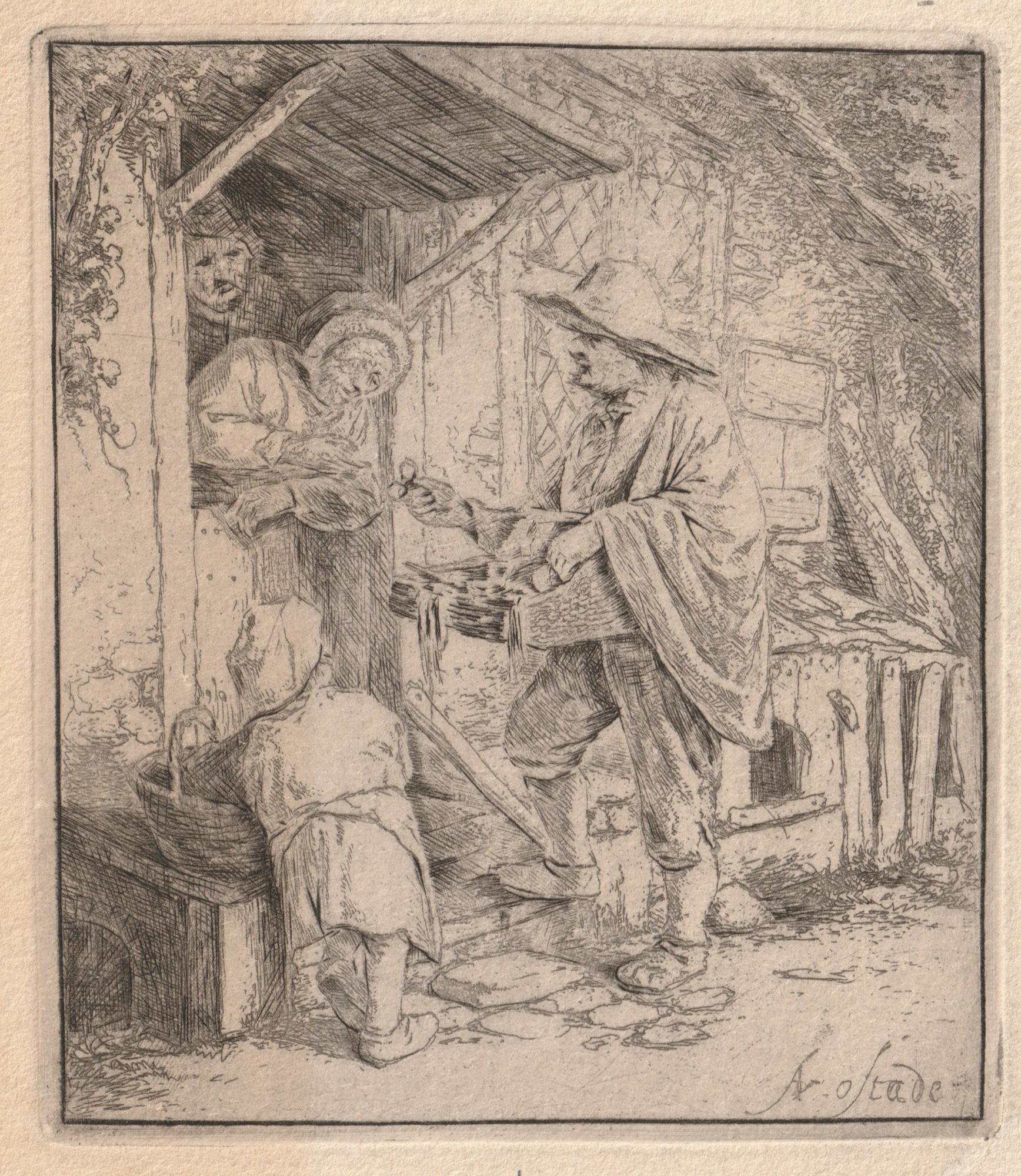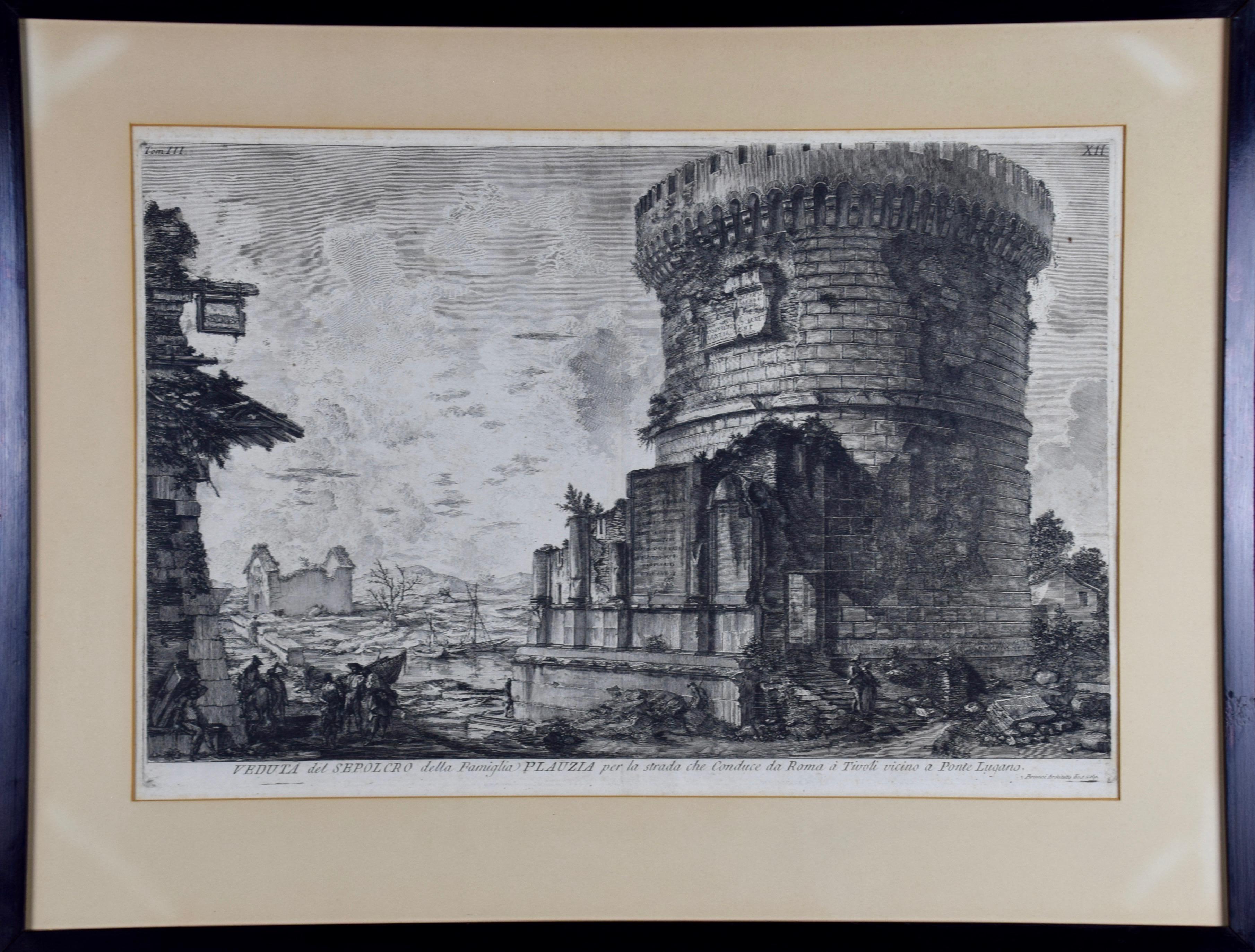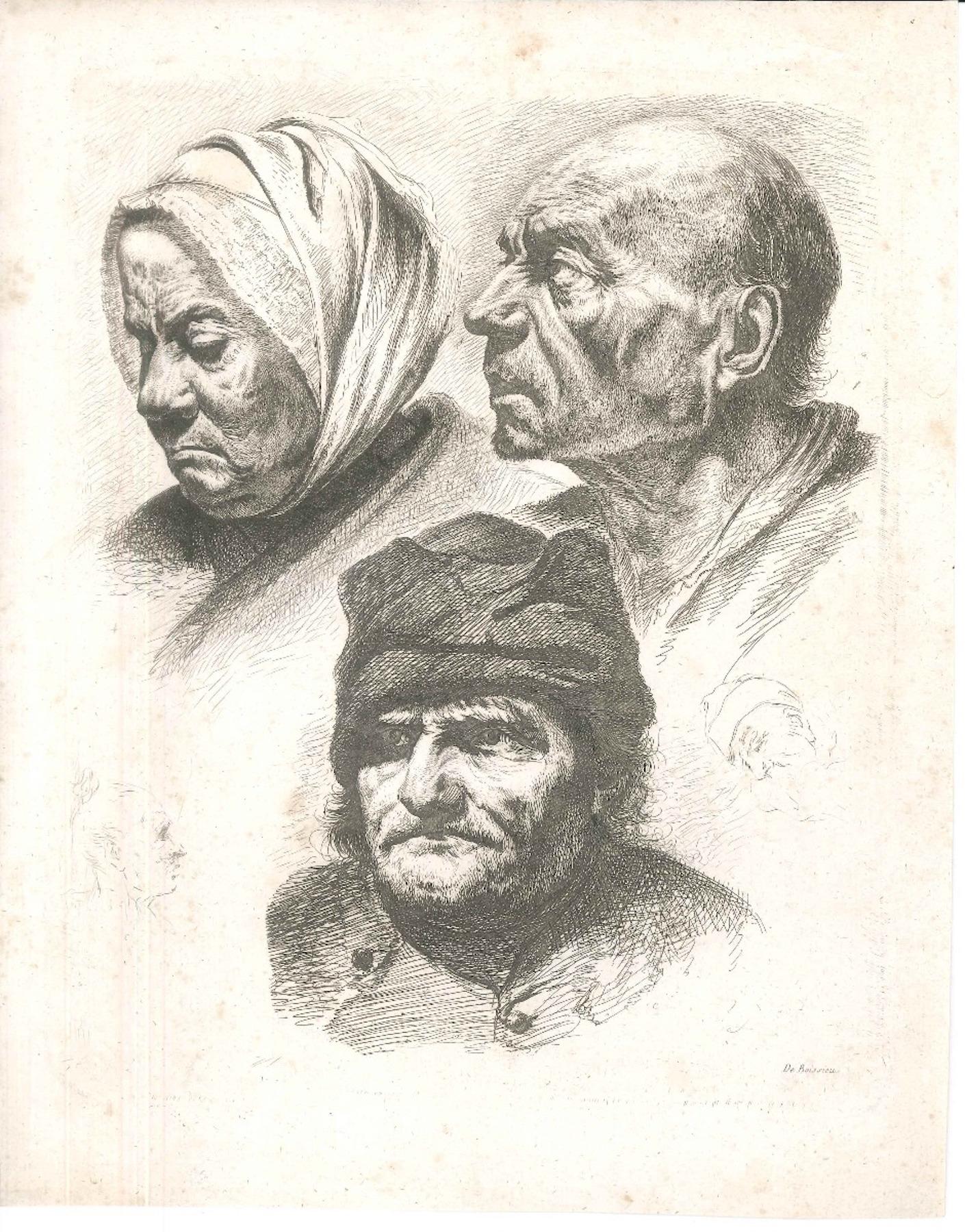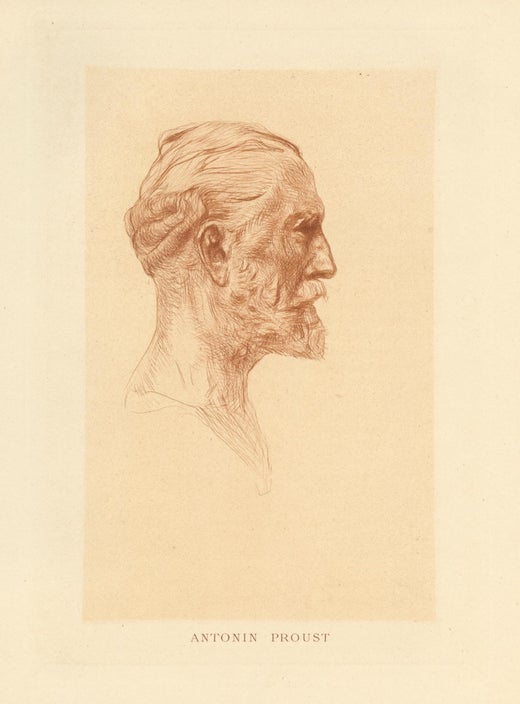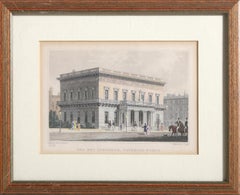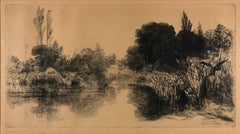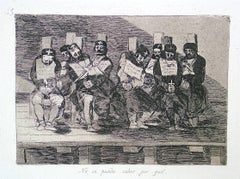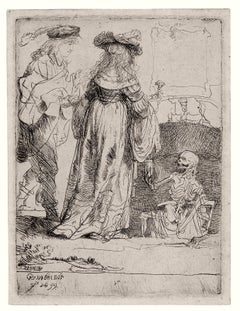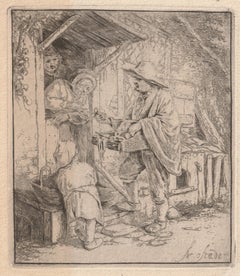Items Similar to La Ronde, Drypoint by Auguste Rodin
Want more images or videos?
Request additional images or videos from the seller
1 of 6
Auguste RodinLa Ronde, Drypoint by Auguste Rodin1883
1883
About the Item
Auguste Rodin, French (1840 - 1917) - La Ronde, Year: 1883, Medium: Drypoint, signed in pencil, Image Size: 4 x 5.75 inches, Size: 13.25 x 9.5 in. (33.66 x 24.13 cm), Reference: Delteil 5, Provenance: From the collection of the late Larry Saphire.
- Creator:Auguste Rodin (1840 - 1917, French)
- Creation Year:1883
- Dimensions:Height: 13.25 in (33.66 cm)Width: 9.5 in (24.13 cm)
- Medium:
- Movement & Style:
- Period:
- Framing:Framing Options Available
- Condition:
- Gallery Location:Long Island City, NY
- Reference Number:Seller: 826591stDibs: LU46614484802
Auguste Rodin
Auguste Rodin was a French sculptor widely regarded as the father of modern sculpture. Breaking away from the idealized forms of classical sculpture, Rodin introduced a more naturalistic, emotionally charged style that emphasized texture, movement, and human emotion. His work often explored themes of love, struggle, and the human condition. Rodin's most iconic works include The Thinker, The Kiss, and The Gates of Hell, many of which began as smaller studies and evolved into monumental masterpieces. His innovative approach to form, fragmentation, and surface detail challenged traditional academic norms and set a new direction for modern sculpture. Despite initial criticism and controversy, Rodin’s work was eventually celebrated as groundbreaking, and he achieved widespread recognition during his lifetime. Today, his sculptures are displayed in major museums and public spaces worldwide, symbolizing the transition from classical to modern art.
About the Seller
4.9
Platinum Seller
Premium sellers with a 4.7+ rating and 24-hour response times
Established in 1979
1stDibs seller since 2014
2,977 sales on 1stDibs
Typical response time: 1 hour
- ShippingRetrieving quote...Shipping from: Long Island City, NY
- Return Policy
Authenticity Guarantee
In the unlikely event there’s an issue with an item’s authenticity, contact us within 1 year for a full refund. DetailsMoney-Back Guarantee
If your item is not as described, is damaged in transit, or does not arrive, contact us within 7 days for a full refund. Details24-Hour Cancellation
You have a 24-hour grace period in which to reconsider your purchase, with no questions asked.Vetted Professional Sellers
Our world-class sellers must adhere to strict standards for service and quality, maintaining the integrity of our listings.Price-Match Guarantee
If you find that a seller listed the same item for a lower price elsewhere, we’ll match it.Trusted Global Delivery
Our best-in-class carrier network provides specialized shipping options worldwide, including custom delivery.More From This Seller
View AllLa Grande Fortune, Old Masters Etching by Amand Durand after Albrecht Durer
By Charles Amand Durand
Located in Long Island City, NY
Artist: Charles Amand-Durand, French (1831 - 1905) after Albrecht Dürer, German (1471 - 1528)
Title: La Grande Fortune
Year: 1873 (original circa 1502)
Medium: Heliogravure on thin l...
Category
1870s Old Masters Figurative Prints
Materials
Engraving
Saint Jerome by Amand-Durand after Albrecht Durer
By Charles Amand Durand
Located in Long Island City, NY
Artist: Albrecht Dürer, After by Amand Durand, German (1471 - 1528)
Title: Saint Jerome
Year: 1873
Medium: Heliogravure
Size: 9 x 7.25 in. (22.86 x 18.42 ...
Category
1870s Old Masters Figurative Prints
Materials
Engraving
Jesus Christ Expirant sur la Croix etching by Amand-Durand after Albrecht Durer
By Charles Amand Durand
Located in Long Island City, NY
Artist: Charles Amand-Durand, French (1831 - 1905) after Albrecht Dürer, German (1471 - 1528)
Title: Jesus Christ Expirant sur la Croix
Year: 1873
Medium: Heliogravure on wove paper
...
Category
1870s Old Masters Figurative Prints
Materials
Engraving
The New Athenaeum, Waterloo Place - Hand-Colored Engraving after Thomas Shepherd
By Thomas Hosmer Shepherd
Located in Long Island City, NY
Thomas Hosmer Shepherd, After by James Tingle, British (1793 - 1864) - The New Athenaeum, Waterloo Place, Medium: Hand Colored Engraving, Image Size: 3.75 x 5.75 inches, Frame Siz...
Category
Early 19th Century Old Masters Landscape Prints
Materials
Engraving
Heliodrorus, Old Masters Engraving after Raphael Sanzio da Urbino
Located in Long Island City, NY
Raphael Sanzio da Urbino, After by Alphonse Leroy, Italian (1483 - 1520) - Heliodrorus, Medium: Engraving, Image Size: 10.75 x 13.25 inches, Size: 19 x 25.5 in. (48.26 x 64.77 cm)...
Category
15th Century and Earlier Old Masters Prints and Multiples
Materials
Engraving
Vue de la Bastille, Old Masters Hand-Colored Engraving after Hyacinthe Rigaud
By Hyacinthe Rigaud
Located in Long Island City, NY
Hyacinthe Rigaud, After, French (1659 -1743) - Vue de la Bastille, Year: of original: 1750, Medium: Hand-Colored Engraving, signed in the plate, Edition: ~1000, Image Size: 8.5 x...
Category
1750s Old Masters Landscape Prints
Materials
Engraving
You May Also Like
Shere Mill Pond
By Sir Francis Seymour Haden, R.A.
Located in Missouri, MO
Shere Mill Pond, No. II (large plate). 1860. Etching and drypoint. Schneiderman 37.v/ix. 7 x 13 1/8 (sheet 10 3/4 x 16 3/8). This state is prior to publication in Études à l'Eau-Forte. Illustrated: Keppel The Golden Age of Engraving; Print Collector's Quarterly 1 (1911): 18; : Guichard, British Etchers, 1850-1940. A rich, brilliant proof with drypoint burr printed on white laid paper. Signed in pencil.
-------------------------------------------------------------------------------------------
Shere Mill Pond, No. II was one of the most highly praised landscape prints of the etching revival. An impression was exhibited at the Royal Academy in 1861 under Haden’s pseudonym, H. Dean. Francis Seymour Haden used this anagram of his own name early in his career as an artist, in order to retain his anonymity and preserve his professional reputation as a surgeon.
Biography:
Sir Francis Seymour Haden (16 September 1818 - 1 June 1910), was an English surgeon, best known as an etcher.
He was born in London, his father, Charles Thomas Haden, being a well-known doctor and lover of music. He was educated at Derby School, Christ's Hospital, and University College, London, and also studied at the Sorbonne, Paris, where he took his degree in 1840. He was admitted as a member of the College of Surgeons in London in 1842.
In 1843-1844, with his friends Duval, Le Cannes and Colonel Guibout, he travelled in Italy and made his first sketches from nature. Haden attended no art school and had no art teachers, but between 1845 and 1848 he studied portfolios of prints belonging to a second-hand dealer named Love, who had a shop in Bunhill Row, the old Quaker quarter of London. Arranging the prints in chronological order, he studied the works of the great original engravers, Albrecht Dürer, Lucas van Leyden and Rembrandt. These studies, besides influencing his original work, led to his important monograph on the etched work of Rembrandt. By lecture and book, and with the aid of the memorable exhibition at the Burlington Fine Arts Club in 1877, he tried to give a true reflection of Rembrandt's work, giving a nobler idea of the master's mind by taking away from the list of his works many dull and unseemly plates that had long been included in the lists. His reasons were founded upon the results of a study of the master's works in chronological order, and are clearly expressed in his monograph, The Etched Work of Rembrandt critically reconsidered, privately printed in 1877, and in The Etched Work of Rembrandt True and False (1895).
Haden's printmaking was invigorated by his much younger brother-in-law, James Whistler, at the Haden home in Sloane Street in 1855. A press was installed there and for a while Haden and Whistler collaborated on a series of etchings of the Thames. The relationship and project did not last.
Haden followed the art of original etching with such vigour that he became not only the foremost British exponent of that art but brought about its revival in England. His strenuous efforts and perseverance, aided by the secretarial ability of Sir WR Drake, resulted in the foundation of the Royal Society of Painter-Etchers and Engravers. As president he ruled the society with a strong hand from its first beginnings in 1880.
Notwithstanding his study of the old masters of his art, Haden's own plates were very individual, and are particularly noticeable for a fine original treatment of landscape subjects, free and open in line, clear and well divided in mass, and full of a noble and dignified style of his own. Even when working from a picture his personality dominates the plate, as for example in the large plate he etched after J.M.W. Turner's "Calais Pier," which is a classical example of what interpretative work can do in black and white. Of his original plates, more than 250 in number, one of the most notable was the large "Breaking up of the Agamemnon."
An early plate, rare and most beautiful, is "Thames Fisherman". "Mytton Hall" is broad in treatment, and a fine rendering of a shady avenue of yew trees leading to an old manor-house in sunlight. "Sub Tegmine" was etched in Greenwich Park in 1859; and "Early Morning--Richmond", full of the poetry and freshness of the hour, was done, according to Haden, actually at sunrise. One of the rarest and most beautiful of his plates is "A By-Road in Tipperary"; "Combe Bottom" is another; and "Shere Mill Pond" (both the small study and the larger plate), "Sunset in Ireland," "Penton Hook," "Grim Spain" and "Evening Fishing, Longparish," are also notable examples of his genius. A catalogue of his works was begun by Sir William Drake and completed by Harrington in 1880. During later years Haden began to practise the sister art...
Category
Late 19th Century Old Masters Landscape Prints
Materials
Drypoint, Etching
One Can't Tell Why - Proof from the Disasters of War
By Francisco Goya
Located in New York, NY
Francisco José de Goya y Lucientes (1746 Fuendetodos – Bordeaux 1828), No se puede saber por qué – One can’t tell why ca. 1808–1814, etching, burnished aquatint, drypoint, an...
Category
1810s Old Masters Figurative Prints
Materials
Drypoint, Etching, Aquatint
Death Appearing to a Wedded Couple from an Open Grave
By Rembrandt van Rijn
Located in New York, NY
REMBRANDT HARMENSZ. VAN RIJN
1606 Leiden Amsterdam 1669
Death Appearing to a Wedded Couple from an Open Grave 1639
drypoint and etching; 109 x 78 mm
Bartsch 109, White/Boon only s...
Category
1630s Old Masters Prints and Multiples
Materials
Drypoint, Etching
The Spectacle Seller
By Adriaen Jansz van Ostade
Located in Middletown, NY
Etching and drypoint on cream laid paper, 4 x 3 3/8 inches (102 x 86 mm), 1/4 inch margins. Signed in the plate, lower left corner. The 3rd state (of 6), after the rounding of the pl...
Category
Mid-17th Century Old Masters Figurative Prints
Materials
Laid Paper, Drypoint, Etching
Ancient Roman Architecture: Original Framed 18th C. Etching by G. Piranesi
By Giovanni Battista Piranesi
Located in Alamo, CA
"Veduta del Sepolcro della Famiglia Plauzia per la Strada Che Conduce da Roma a Tivoli vicino a Ponte Lugano" from "Le Antichità Romane" (Roman Antiquities), one of the most famous works by Piranesi. "Antichita" illustrates the tombs along the Appian Way...
Category
Early 18th Century Old Masters Figurative Prints
Materials
Etching, Engraving, Drypoint
Study of Five Heads - Original Etching by J.-J. Boissieu
By Jean-Jacques de Boissieu
Located in Roma, IT
Study of Five Heads is a beautiful black and white etching with drypoint interventions on paper, realized at the end of XVIII century by the French artist Jean-Jacques de Boissieu (Lyon, 1736- 1810).
Five study of heads of which two profiles (a female and a male) are lightly sketched with the drypoint technique, and we could appreciate the incredible draftsmanship. Instead, the bigger three portraits are very detailed and etched with a superb technique. Although the subjects are drawn in different scales and with different degrees of finish, each portrait has the dignity of a unique piece and the composition is very balanced.
In particular on the lower margin at the center there is the portrait of "Le Père Cotrot, Garçon Teinturier à Lyon'", an elderly man, toothless and with a large-nosed, slightly turned to left, with a hat and unbuttoned jacket over waistcoat, shows all his wrinkles in a very realistic way.
Signed on plate on lower right margin “De Boissieu”.
This old master’s original print with fresh impressions, is in very good conditions, except for a usual yellowing of the paper above all on the edges and some signs of the time and light foxing along the margins, do not affect the image.
Jean-Jacques de Boissieu (Lyon,1736 –1810)
Jean-Jacques de Boissieu was a French artist studied at the École de Dessin in Lyon, but he was mostly self-taught.
His first prints were realized between 1758–64. When he went to Italy in the retinue of the ambassador and Duc de la Rochefoucauld d’Enville, he had the lifechanging encounter: he met Voltaire and he entered in the world of luminaries, he had the opportunity of realizing some plates for the Diderot-d’Alembert’s Encyclopèdie. Then he continued to produce prints in Lyon, Boissieu made many etchings of the Roman and Dutch countryside, as well as the French countryside around Lyon, which earned him a reputation as the last representative of the older etching...
Category
Late 18th Century Old Masters Animal Prints
Materials
Drypoint, Etching
Recently Viewed
View AllRead More
Romare Bearden’s Humanity Infuses His Bright, Bold Art
Through collage, painting and printmaking, the artist foregrounded Black life in America in revolutionary new ways.
Chryssa’s 1962 Neon Sculpture Was Way ahead of the Art-World Curve
By working with lettering, neon and Pop imagery, Chryssa pioneered several postmodern themes at a time when most male artists detested commercial mediums.
More Ways To Browse
Warhol Kimiko Powers
Warhol Lincoln Center Ticket
Warhol Margrethe
Waterworks Henry
Wayne Ensrud On Sale
Wesselmann Vivienne
Whistler Forge
Whistler Fumette
William Greengrass
William Todd Haile
Willis Wine Bar
Winslow Homer Poster
Woman Taking Off Mans Shirt
Woody Othello
World War Ii Spotter Poster
Yoko Ono Imagine Peace
Yoshitomo Nara Banging The Drum
Yu Heshi
